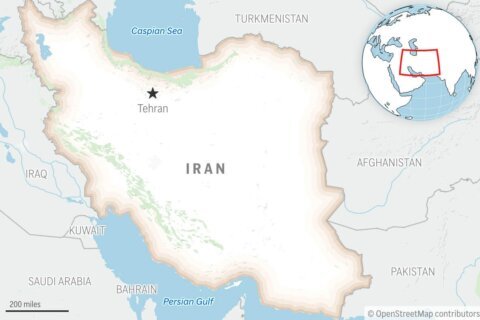Stretches of the Dominican Republic’s sandy coast, including Puerto Plata and Punta Cana, have been catering to tourists for a decade or longer, and it shows. These resort towns could be Cancún or any other resort town in any other country. That’s one face of this Caribbean island nation.
[Read: One Couple’s Retirement Adventure in the Caribbean.]
The Samaná region is another. It’s less known, less visited and offers two very different options for expats: Las Terrenas and Samaná town. Cruise lines discovered this part of the Dominican Republic around 2006, when ships began calling at the small harbor town of Samaná at the tip of the Samaná Peninsula. The development that followed spread gradually inward from the coast, eventually reaching Las Terrenas.
Now Samaná is a shell of a town that comes alive only when a ship is in port. Las Terrenas, on the other hand, has managed to take advantage of the benefits of development. The one-time village known as Las Terrenas has come into its own in recent years, and recent improvements make it a top choice in the region for retirees.
When the cruising behemoths began pulling into the small port of Samaná a few times a month, discharging hundreds of visitors at a time to throng through the town at once, the local government invested in supporting infrastructure. But the strategy wasn’t forward-thinking or sustainable. The focus was on the town, not the peninsula.
Specifically, the focus was the harbor. This had a predictable effect: A half-kilometer stretch around the harbor looks like Main Street in Disney World. The rest of the town looks and feels empty. The cookie-cutter colonial houses that were built in a strip, painted in candy colors and intended as business locations are charming, but more than 70 percent are unoccupied. No cruise ship was in port when I visited recently, so the few occupying businesses in these houses were closed. This included the tourism office, which is located here and was closed at 3 p.m. on a Saturday afternoon.
A good test when visiting a new city can be to take note of who is out and about on the streets. Are kids playing or walking home from school alone? Are women walking unaccompanied? These are good indicators that a place is safe. In Samaná, other than a few women working in shops and restaurants, the streets were populated only by men. I didn’t feel completely comfortable walking around here alone even at midday.
[See: How to Prepare for Retirement Overseas.]
One enduring upside of the government attention as a result of the cruise ship traffic is the highway that was built from the capital to Samaná. This wasn’t a short-sighted investment that benefitted only little Samaná town, like the row of houses at the harbor. The highway spans and supports half the country, including Samaná and also Las Terrenas, two hours away along the coast. Still a sleepy fishing village just 10 years ago, Las Terrenas now enjoys the advantages that come from improved access while retaining its small town charm.
Founded by the French in the 1970s, this hamlet has been attracting foreigners for decades. Foreign residents here are an established and comfortable part of the landscape. After the French arrived, the Germans, Italians, Swiss, Brits, Poles and Russians followed. This immigration history has meant the development of infrastructure to support an eclectic international community, from a German meat shop and an authentic French boulangerie to a Swiss cheese shop, an Omaha beef store and an Italian clothing boutique.
That’s not to say that the local Caribbean culture is lacking. The Caribbean culture has melded with European. Typical Old World ideas about courtesy and attention to detail are reflected in everything. At the same time, the once all-dirt town is now organized around plazas of pretty flagstones, the roads are all paved and signposted and none of the tropical feeling has been lost. This is still a sun-faded, pastel-painted beach town, with coconuts falling in the streets and white sand around every corner.
With all of the history and culture its long-time foreign residents have imported, as well as the newer highway system, international-standard hospital and a real grocery store, Las Terrenas is now expat-ready. While some of your predecessors may have had to rough it, your move here could be comparatively turn-key and comfortable.
[See: 10 Affordable Places to Retire Overseas in 2016.]
Still, Las Terrenas is a relatively off the beaten path retirement choice. It offers many amenities that other Caribbean destinations lack, but don’t make the mistake of thinking that living here would be just like living back home. It wouldn’t. If you’re up for a Caribbean adventure, but like the idea of comforting yourself in the face of the challenges of establishing a new life in this part of the world with a glass of good wine and a plate of imported cheeses come each day’s end, then Las Terrenas could be the perfect spot for you.
Kathleen Peddicord is the founder of the Live and Invest Overseas publishing group.
More from U.S. News
50 Affordable Places to Buy a Retirement Home in 2016
10 Ways to Reduce Your Housing Costs in Retirement
10 Alternatives to Full-Time Retirement
Retirement in the Dominican Republic: Las Terrenas Versus Samaná originally appeared on usnews.com







